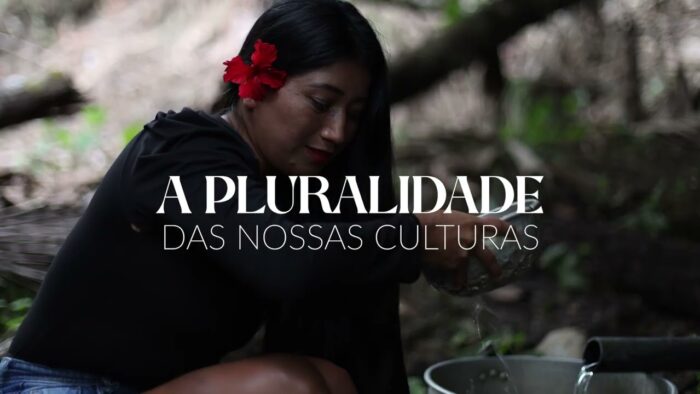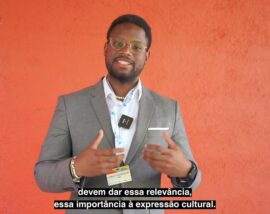Challenge Nicaragua is the poorest country in Central America with gross national income (GNI) per capita of US$1,940 (2015). Decades of civil conflict and a series of catastrophic natural disasters have left the country lagging behind most of its neighbors in terms of economic and social indicators. Despite notable progress in poverty reduction over the last decade, much work remains, as 29.6 percent of the country’s more than six million inhabitants live in poverty; 8.3 percent in extreme poverty. Most of the poor live in rural areas, often in remote communities where access to basic services is still constrained by very limited infrastructure. Social and basic service indicators in the rural Atlantic coastal regions are significantly lower than in the rest of the country, disproportionately impacting indigenous and Afro-descendant populations. Though economic growth has been stronger than average for the Region and prudent macroeconomic management has underpinned the country’s solid economic performance, key challenges remain in reducing vulnerabilities and increasing productivity. Nicaragua ranks among the most vulnerable in terms of natural disasters and extreme climate; other major vulnerabilities include dependence on oil imports, concentration of food exports to limited countries, and the drought affecting Central America. Given the country’s low level of per capita income, higher growth rates are necessary to further reduce poverty and boost shared prosperity. Furthermore, aggregate productivity has been declining over the last decade, constraining Nicaragua’s ability to move to a higher growth equilibrium and requiring additional efforts to improve productivity. Approach Against this backdrop, the WBG approach in Nicaragua has focused on improving the delivery of basic services and strengthening competitiveness as a means to accelerate income growth. The IDA (International Development Association) lending program has helped Nicaragua raise welfare by improving access to quality basic services through scaling up of new service delivery models in health, education, social protection, and water & sanitation, particularly in areas where Nicaragua faces significant challenges linked to achieving the Sustainable Development Goals (SDGs). The WBG program also seeks to raise incomes by enhancing competitiveness and diversifying exports, deepening the impact of programs in rural infrastructure, and incorporating a focus on productivity into land and small & medium enterprise (SME) administration, as well as by ensuring greater synergies with International Finance Corporation (IFC) and Multilateral Investment Guarantee Agency (MIGA) engagements in agribusiness, and in the energy and financial sectors. The WBG program also incorporates a focus on mainstreaming issues related to gender, indigenous peoples, disaster risk mitigation and climate adaptation. IDA Program Results Enhanced health services in rural and indigenous territories: Through “casas maternas,” a component of the Improving Community and Family Health Care Services Project, maternal and infant health has improved: from 2012 to 2015, the percentage of pregnant women receiving four prenatal controls increased from 50 to 73; institutional deliveries increased from 72 percent to 87 percent; and the percentage of children under age one immunized with the Pentavalent vaccine increased from 88 to 98 in targeted municipal health networks. Increased access to water & sanitation: From 2009 to 2015, over 168,000 beneficiaries of the Greater Managua Water and Sanitation (PRASMA) Project gained access to reliable water supply (16 hours per day) in urban areas, and more than 62,000 beneficiaries gained access to sanitation services. In rural areas, from 2008 to 2015, more than 68,000 beneficiaries from the Rural Water Supply and Sanitation Project (PRASNICA) gained access to water supply and sanitation services (of which 44,000 were in indigenous territories); and by the end of the period, women were serving as presidents or treasurers in 70 percent of the Water & Sanitation Committees involved. Land rights have been strengthened, benefitting 15 of Nicaragua’s 21 indigenous territories in the historically marginalized Atlantic regions. From 2005 to 2013, through the Land Administration Project (PRODEP), over 104,000 people from 214 communities in five major ethnic groups benefited; 18 percent of the national territory was registered and titled with support of the project. Improving roads sustainably: Through the Rural Roads Infrastructure Improvement Project, a successful, scalable model for investment and maintenance of rural roads has been implemented through the development of “módulos comunitarios de adoquines” or community participation associations focused on road construction with locally-made blocks that allow for faster, more sustainable road works while creating jobs for vulnerable communities. From 2012 to 2015, four-hundred and ten kilometers of rural roads were constructed, more than 280 Community Modules for Adoquines created, generating short-term employment for over 900 people, of which 34 percent were women. Overall, more than 9,000 short-term jobs were created, providing people with skills and the ability to look for future employment. In addition, 52 micro-enterprises were established to carry out routine maintenance of 3,200 km of rural roads. Enhanced agricultural productivity through technology adoption: With support from the Second Agricultural Technology Project, between 2005 and 2014, more than 33,000 producers adopted at least two new production and/or processing technologies; over 3,000 producers were trained in food processing, business administration and marketing; and more than 1,400 producers from 30 cooperatives produced certified seeds of basic grains. Overall, productivity indices of participating farmers (25 percent of which were women) increased an average of 16 percent, and crop production increased from 1,800 to 4,728 metric tons. Bank Group Contribution As of June 2017, the IDA portfolio in Nicaragua reached US$560.82 million in net commitments, focusing on the sectors of water & sanitation, health, education, food security, disaster risk management, land administration, roads infrastructure and connectivity, social protection, and public financial management. From 2012 to 2016, IFC’s investments in Nicaragua have grown from 11 projects totaling US$166.9 million, to approximately US$279.4 million, including advisory services and investment projects in agribusiness (coffee, sugar, forestry), the financial sector, mining and energy (geothermal). MIGA’s guarantees more than doubled in the same period, from US$34.9 million to US$76 million, focusing on the renewable energy sector. Partners Implementation of the WBG program has benefited from an efficient division of labor among key development partners, as well as more coordinated programs among donors. Key WBG partnerships in Nicaragua, including through trust funds, are featured in: (i) the education sector, with the European Union (EU) and Global Program for Education; (ii) public financial management, with the Inter-American Development Bank (IDB) and EU; (iii) the water & sanitation sector, with Switzerland and Spain; (iv) roads and transport, with Japan; and (v) agriculture, with the Global Agricultural and Food Security Program (GAFSP) and Canadian International Development Agency (CIDA). In a recent example of collaboration, the IFC and GAFSP, together with the IDB and private firms, provided a US$30 million package of financing to farmers for the renovation of over 5,000 hectares of coffee plantations affected by coffee rust disease in Nicaragua – in this way helping the country mitigate climate change by deploying a scalable model of climate-smart renovation that can be replicated by other countries and coffee traders. Moving Forward Given the satisfactory pace of implementation, the priorities of the WBG program remain relevant and aligned to the Government’s priorities. Over the coming period, the WBG will continue to leverage its products and services to complement IDA resources and help mobilize other development financing related to the two pillars of the Country Partnership Framework: i) improving access to quality basic services; and ii) increasing competitiveness and productivity. In particular, it will focus on building scalable programs that can attract additional resources and closely coordinate IDA, IFC and MIGA interventions, while continuing to deepen the focus on mainstreaming gender and indigenous peoples’ issues. IDA and IFC will also jointly support Nicaragua in its effort to unlock geothermal potential by mitigating risks associated with the exploration phase and helping to leverage financing for geothermal development through public private partnerships. IFC will continue its program of credit lines in the trade sector, agribusiness-finance and SME lending, while looking for opportunities in other sectors, such as higher education, where IFC can complement IDA work. MIGA will also be open to opportunities to support foreign investments in the financial sector. Beneficiaries In Water & Sanitation: "I used to go every day at this time to my mother’s house, about 400 meters from here, to get water and use her bathroom," Jacqueline recalls. Her home is one of the 125 houses in this rural town that now has water connections. "The families are happy because they have sinks, showers and toilets" explains Angela Durand, a neighbor who coordinates the local Water & Sanitation Committee. Besides the work the Committee has done in the neighborhood, Angela is proud that the organization includes and respects local women. "Women are organized and have the capacity to manage projects and communities as well as their homes" she says. http://www.worldbank.org/en/news/feature/2013/01/22/agua-saneamiento-comunidades-rurales Key Words Learn More Links to key related sites The web site of the World Bank for Nicaragua (www.worldbank.org/ni) offers in-depth information on all projects and programs in the country. Links to partner websites – Government of Nicaragua – Ministry of Finance – European Union Delegation in Nicaragua Multimedia VIDEO: Escuela de valores, muchos pasos hacia adelante VIDEO: Consejeros, transformando vidas en Nicaragua VIDEO: Los adoquines: un camino para terminar con la pobreza de Nicaragua – World Bank – BLOG: Going the last mile in Nicaragua: local communities pave the road to end poverty – Stephen Muzira, World Bank – BLOG: In Nicaragua, rural communities obtain visible results in access to water and sanitation


